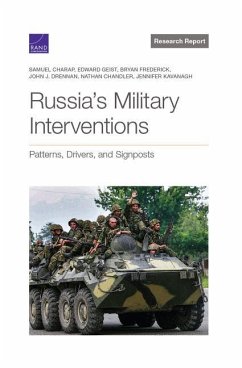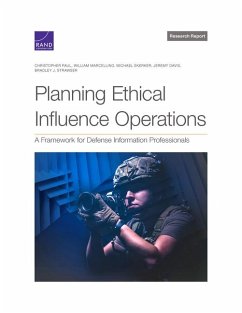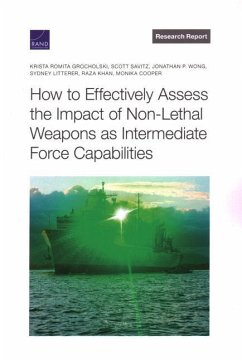
Forecasting Demand for U.S. Ground Forces
Assessing Future Trends in Armed Conflict and U.S. Military Interventions
Versandkostenfrei!
Versandfertig in über 4 Wochen
49,99 €
inkl. MwSt.

PAYBACK Punkte
25 °P sammeln!
To defend against potential threats, the U.S. Army devotes significant resources to strategic and operational planning. This planning is an exercise in risk management across the wide array of potential threats facing the United States. Military planners need tools that leverage emergent trends in the global geostrategic environment to forecast future contingencies to preemptively build, shape, and prepare U.S. forces for the kinds of missions they are most likely to encounter in the future and for the contingencies that pose the greatest strategic risk to the United States. This report provid...
To defend against potential threats, the U.S. Army devotes significant resources to strategic and operational planning. This planning is an exercise in risk management across the wide array of potential threats facing the United States. Military planners need tools that leverage emergent trends in the global geostrategic environment to forecast future contingencies to preemptively build, shape, and prepare U.S. forces for the kinds of missions they are most likely to encounter in the future and for the contingencies that pose the greatest strategic risk to the United States. This report provides empirically grounded assessments of potential future demands for U.S. ground forces. It does so by presenting a dynamic forecasting model that projects future U.S. ground interventions in a range of scenarios through the year 2040. The model the authors have developed incorporates annual projections of opportunities for U.S. intervention-including armed conflicts and their aftermath-and U.S. ground interventions themselves for each year in the 2017-2040 time frame. The authors present three main types of projections: trends in the future operating environment, including the incidence of interstate wars and intrastate conflicts; future U.S. ground interventions, including those involving deterrence, combat, and stabilization activities; and the anticipated average force requirements for those interventions. This analysis identifies key factors that can serve as early warning indicators of future conflicts and provides an improved empirical basis for estimating the frequency, magnitude, duration, and overlap of future contingencies.












